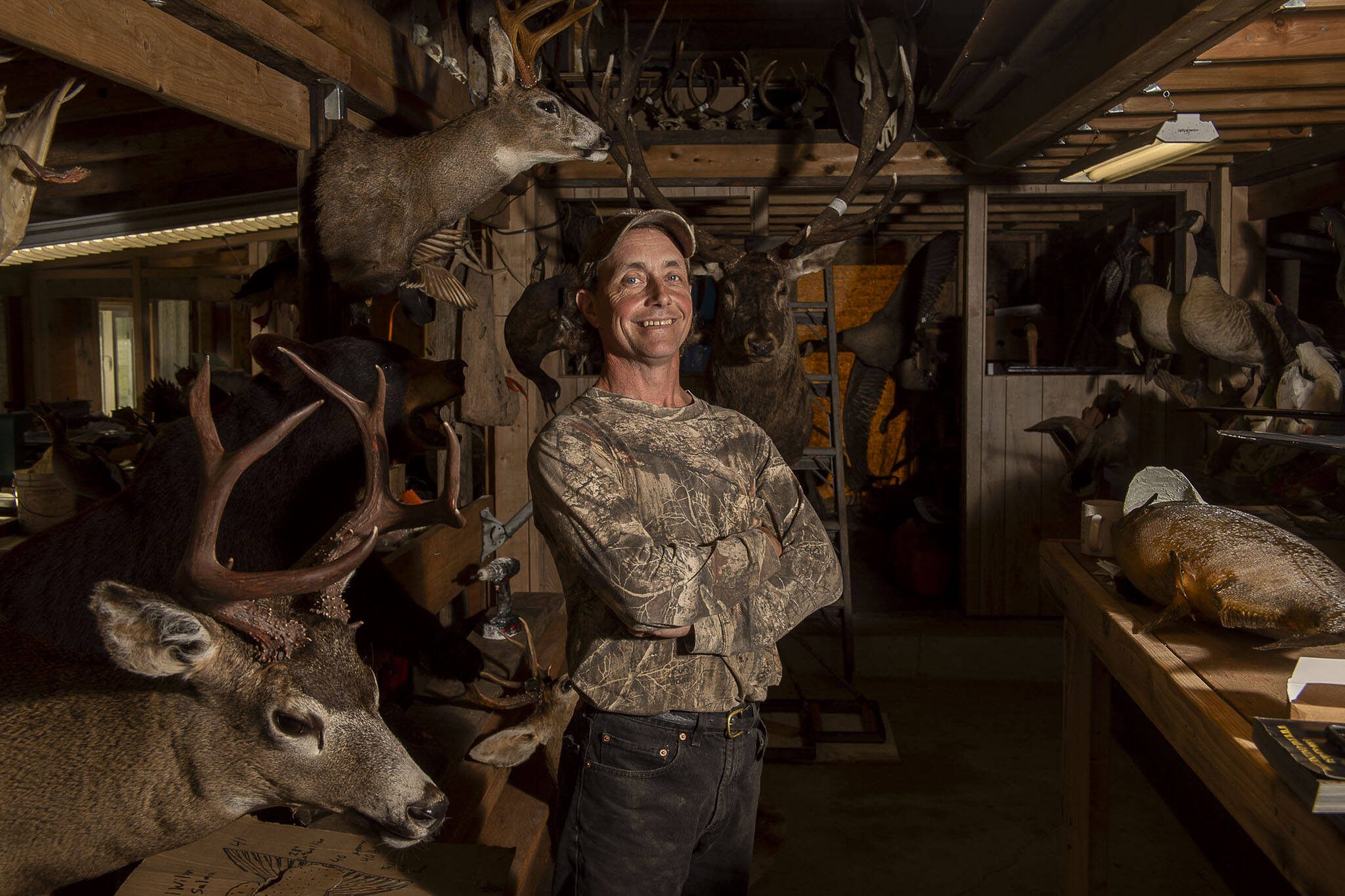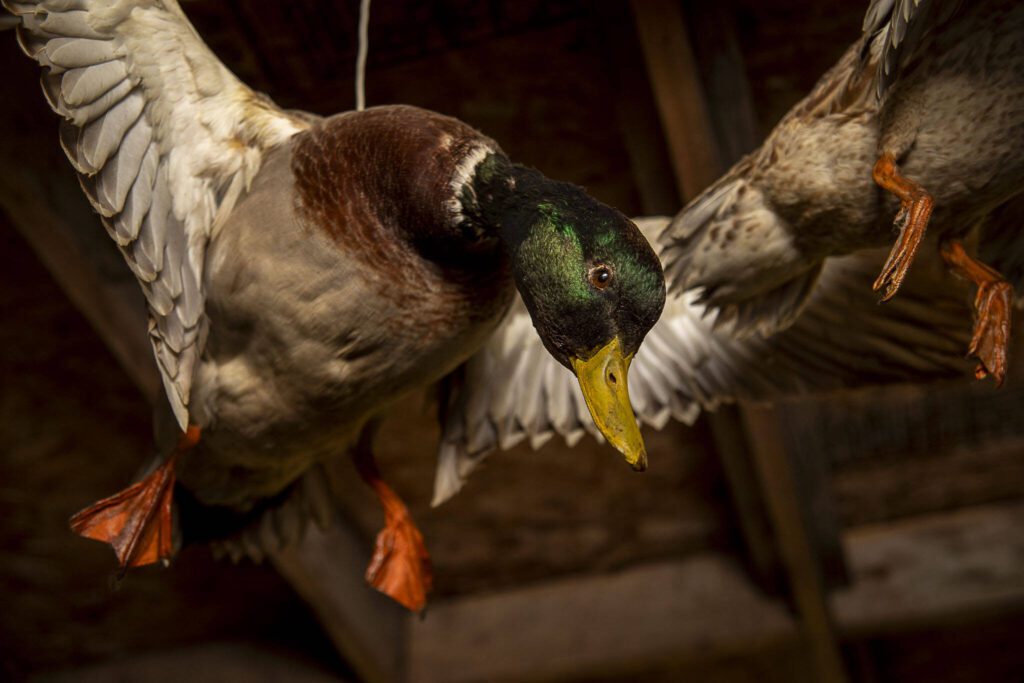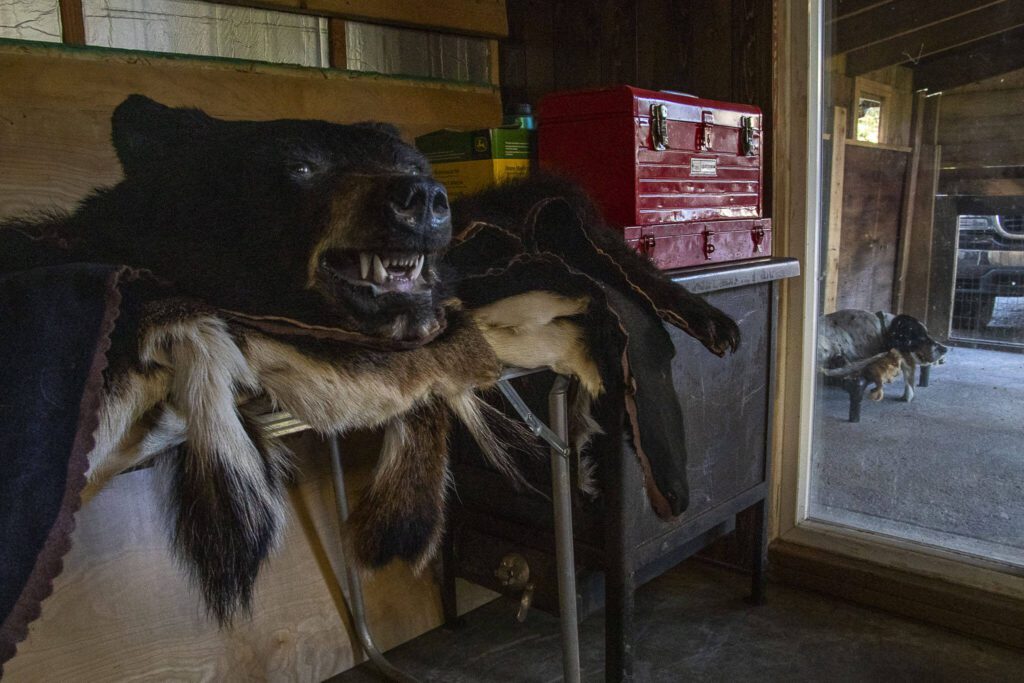After school on most days, Steve Moro’s dad taught him and his six other siblings to fish and hunt in the foothills of Snohomish and Monroe.
Fishing is not that hard, he says. It’s something “you learn as you go.” For him, fishing was an excuse to gather with friends and bond with his family.
Having always felt “naturally artistic,” Moro was drawn to the wildlife he grew up with.
“Seeing things like when you go to the sports store to get your fish tackle. They have big fish like this on the wall, and you would see that and go, ‘God, I love that!’” Moro said. “Deer hunting, seeing big racks and horns and moose and elk and deer and stuff, they’re intriguing.”
Over four decades later, he works out of his childhood home — single-handedly running a taxidermy business rooted in the skills taught by his late father.
Moro, 52, is now the owner of Woods Creek Taxidermy in Snohomish. The artist spends his days preserving creatures from the Pacific Northwest and beyond: specimens like bears, deer, elk, ducks and fish.
On a Friday afternoon, the taxidermist had tidied up the garage shop for company. But on an average day, the workspace gets messy “like you wouldn’t believe.”
An unfinished Chinook king salmon sat on Moro’s work table, one of many ongoing projects around the studio. A regular client caught the fish in Canada before shipping it to Moro to be gutted, mounted and brushed up. The project was in its drying stage, which can take a minimum of three months.
Moro looked down at his phone to see a text from the salmon client wondering when his commission will be finished.
“He’s rushing me through it,” he said, before chuckling and shutting off his phone. “I told him a month. That’s fine, I can do that.”
The term “taxidermy” comes from the Greek words taxis and derma, which literally translates to the “arrangement of skin.”
Moro calls his craft the “art of preservation.”
Taxidermy is the display of an animal’s carcass for art or study. This is done by mounting an animal’s skin onto a form, or “manikin,” to display them in a lifelike position. Some taxidermists buy premade manikins for their creations, but Moro prefers to make his own out of styrofoam.
Moro had been working on the king salmon since July. After cleaning the fish of viscera, he created separate molds for the catch’s head and body before mounting and sewing its scaly skin back on.
After the project fully dries, the artist will remove the excess grease left by its flesh, assemble it, add in photo-finish eyes and touch it up with air brushes, paint and pens to make it come to life. On his phone were pictures his client had sent to model the mount after.
Moro determines a specimen’s positioning based off the client’s perception when they shot it. Were they leaning to the left, shyly? Or were they ferociously looking for prey?
The Moro family got their start in taxidermy in 1947. After their father taught them the tricks of the trade, Moro and two of his brothers opened their own shop in downtown Everett in 1984.
The trio then moved their business, Moro Taxidermy, to their hometown of Snohomish following a fire at the Hewitt Avenue location. People off the street would peer through the windows at the severed heads around the shop before promptly running away in fear, he said.
Moro eventually branched off from his family in 2005 to begin his own taxidermy venture.
In his shop are displayed some of his favorite pieces he’s worked on throughout the years: A local grizzly bear from 1992, clambering over a bench with jaws wide open. A bobcat, caught outside his home, lunging for a pigeon with claws exposed. Two ducks, preserved in 1985, hang from the ceiling, wings in flight.
“Those are some of the first good mounts that I did,” Moro said, pointing to the duck duo.”They’ve been around forever.”
Some projects are mixed-and-matched from multiple animals from his own hunting trips. Moro created a mold of a black deer’s skeleton he found on Whidbey Island. He applied skin from a another deer and added on a new rack of antlers.
In the middle of the room was a red deer’s head with horns expanding outwards, 3 feet tall and 4 inches wide. A client had caught and skinned the deer themselves, then shipped its dry fur and antlers for Moro to mount onto a manikin.
A deer that size, over 5 feet tall from chest to antlers, can sell for anywhere from $750 to $950, Moro says.
Across the studio lies a bear fur rug, with his head propped up and growling. Stacked on top were two other rugs: a raccoon and a coyote. Due to inflation, Moro says he reevaluates prices about once every three years.
“On this bear, today’s price is $2,400, and it went up substantially,” Moro said. “But to get somebody to put up that amount of money for something is difficult.”
Moro does business online through sites like OfferUp, but mostly spreads the word through word-of-mouth and friends of friends.
The taxidermist says he is a “project in the making,” balancing commissions and work for his own pleasure. Sales can move slow, but Moro doesn’t always mind.
When he’s not working, he goes hunting with his tri-color English setter, Clover.
“I have my own stuff, but I always do customers first because that’s what pays the bills,” Moro said. ”I’ve tried to learn how to price things in my favor. As I get older, my time is more valuable.”
Moro is now open for commissions at his home studio.
Sound & Summit
This article is featured in the winter issue of Sound & Summit, a supplement of The Daily Herald. Explore Snohomish and Island counties with each quarterly magazine. Each issue is $4.99. Subscribe to receive all four editions for $18 per year. Call 425-339-3200 or go to soundsummitmagazine.com for more information.
Talk to us
> Give us your news tips.
> Send us a letter to the editor.
> More Herald contact information.






























